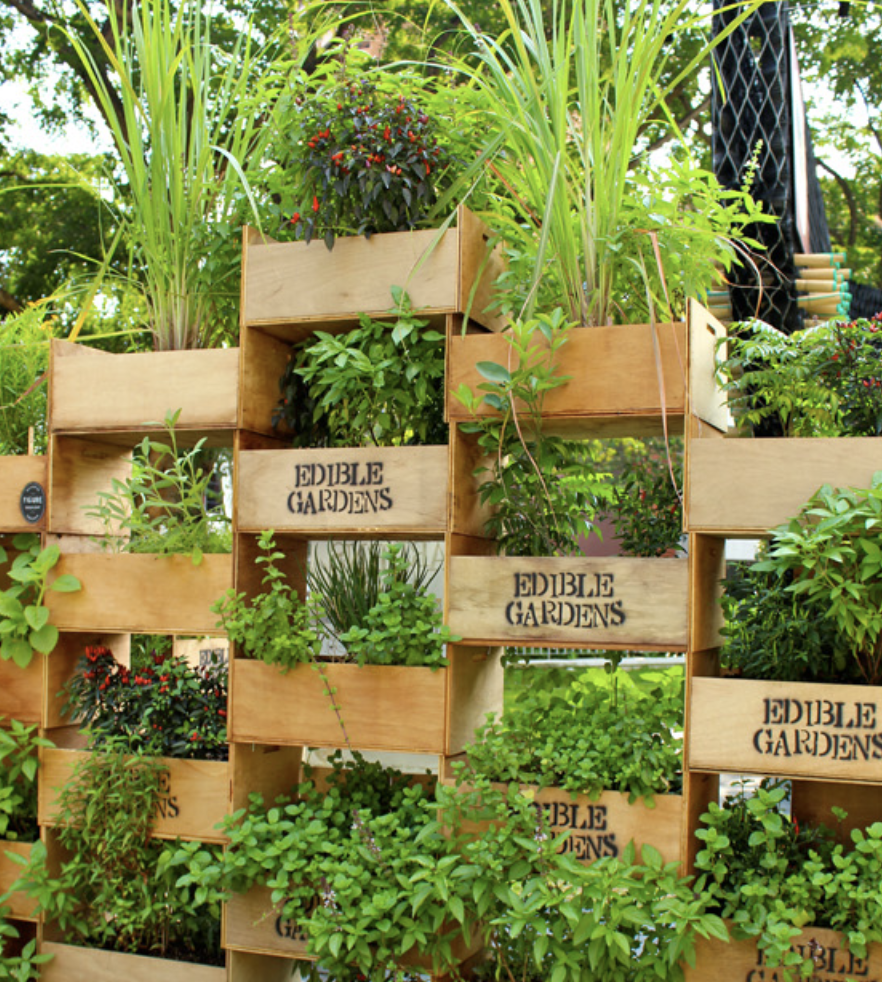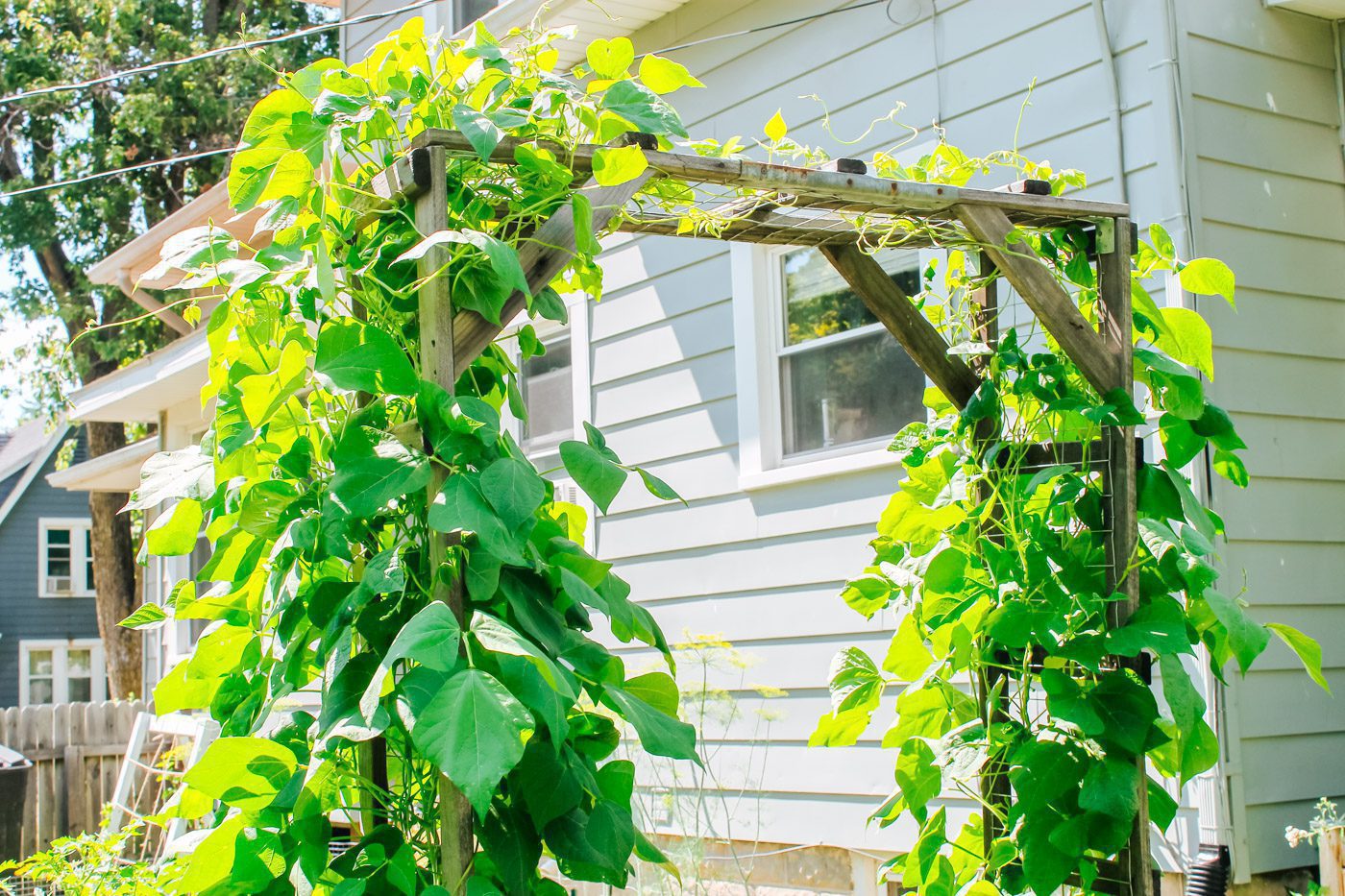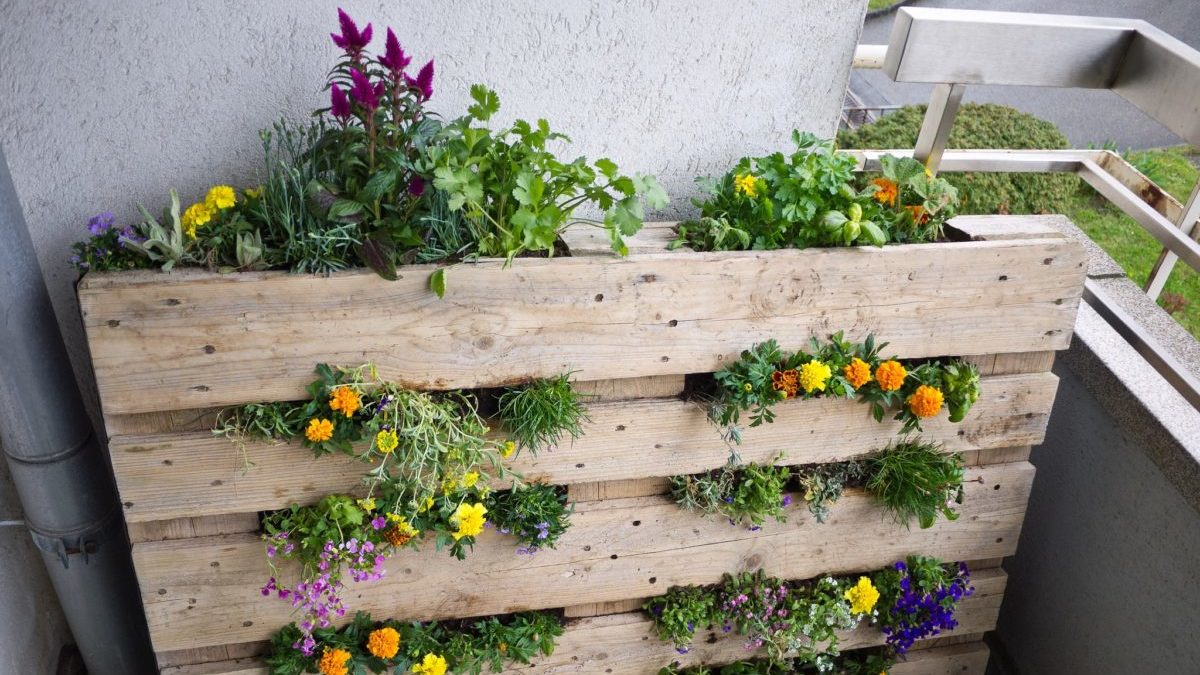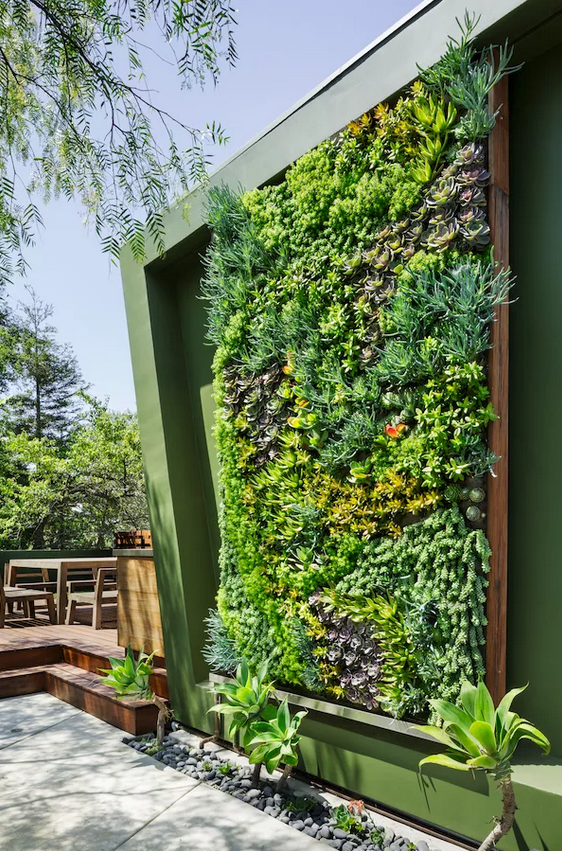Vertical Gardening for Small Spaces
A Beginner’s Guide
Discover how to transform limited space into a lush, productive garden using vertical gardening techniques. Perfect for urban dwellers, small balconies, and tiny yards.
What is Vertical Gardening?
Vertical gardening is basically growing plants upwards instead of allowing them to ramble around on the ground. It’s a space-saving solution that allows city dwellers, apartment residents, and those with limited outdoor space to enjoy growing their own food and decorative plants.
By utilizing walls, fences, trellises, and hanging systems, vertical gardens make the most of available space while creating beautiful living displays that improve air quality and add life to any environment.

Benefits of Vertical Gardening
Maximizes Space
By growing upward instead of outward, you can fit more plants in a smaller footprint. The footprint of a squash plant growing on the ground is about 20 square feet, but growing it up a trellis reduces it to just a few square feet.
Easier Harvesting
Vertical gardening brings plants up to eye level, making harvesting much easier on your back and knees. No more crawling around looking for fruits and vegetables hidden under foliage.
Healthier Plants
Plants grown vertically have better air circulation, reducing disease problems. Keeping fruits off the ground also prevents rotting and protects them from ground-dwelling pests.
Improved Air Quality
Indoor vertical gardens purify the air and improve indoor air quality, making them perfect for apartment living.
Beautiful Design Element
Vertical gardens add structure, beauty, and a living element to your space. They can screen unsightly areas, create privacy, or serve as a stunning focal point.
Low Maintenance
Many vertical garden systems are designed for easy watering and care, making them perfect for beginners or those with busy schedules.
Types of Vertical Gardens

Hanging Planters
Suspend pots from the ceiling, walls, or stands to create a cascading display of plants. Perfect for trailing varieties like herbs, strawberries, and small flowering plants.

Wall-Mounted Systems
Attach planters, pockets, or crates directly to walls to create living wall displays. Great for herbs, small vegetables, and decorative plants.

Trellises and Supports
Use structures to support climbing plants like cucumbers, beans, peas, and small melons. Can be arched, flat, or A-frame designs.

Pallet Gardens
Transform wooden pallets into vertical planters by adding backing and soil pockets. Excellent for herbs, lettuce, and strawberries.

Tower Gardens
Vertical systems with stacked planting areas, often with built-in watering systems. Great for leafy greens, herbs, and small vegetables.
:max_bytes(150000):strip_icc()/verticalgardenusingbuilt-inshelves-4019aba2ee0041d983e6d884e9c9cd5b.jpg)
Shelving Units
Repurpose bookshelves or install tiered shelving to hold multiple plants. Perfect for indoor use and small potted plants.
Budget-Friendly DIY Vertical Garden Ideas
Shoe Organizer Garden

Materials:
- Hanging shoe organizer (fabric)
- Scissors for drainage holes
- Potting soil
- Plants or seeds
How to:
- Cut small drainage holes in the bottom of each pocket
- Hang the organizer on a sturdy wall, fence, or railing
- Fill pockets with soil
- Plant herbs, small flowers, or greens in each pocket
Gutter Garden
Materials:
- Vinyl or aluminum rain gutters
- Gutter end caps
- Drill for drainage holes
- Mounting brackets
- Potting soil
How to:
- Cut gutters to desired length
- Attach end caps and drill drainage holes
- Mount gutters to wall using brackets
- Fill with soil and plant shallow-rooted crops like lettuce, herbs, or strawberries
PVC Pipe Planters
Materials:
- 4-6″ PVC pipes
- Saw to cut pipes
- Drill for drainage and planting holes
- Mounting hardware
- Potting soil
How to:
- Cut PVC pipes to desired lengths
- Cut pipes in half vertically to create troughs
- Drill drainage holes at the bottom
- Mount pipes to a wall or fence using brackets
- Fill with soil and plant leafy greens, herbs, or strawberries
Trellis from Recycled Materials
Materials:
- Wooden pallets, old fencing, or lattice
- T-posts or wooden stakes
- Zip ties or garden wire
- Hammer and nails (optional)
How to:
- Drive T-posts or stakes into the ground
- Attach recycled materials to create a climbing structure
- Secure with zip ties or wire
- Plant climbing vegetables like beans, peas, or cucumbers at the base
Best Plants for Vertical Gardens
Vegetables
- Tomatoes (cherry and determinate varieties)
- Cucumbers (especially compact varieties)
- Beans (pole varieties)
- Peas (snow and snap varieties)
- Lettuce and leafy greens
- Peppers (compact varieties)
- Small melons (with sling support)
- Zucchini and compact squash
Herbs
- Basil
- Mint (container to prevent spreading)
- Rosemary
- Thyme
- Oregano
- Parsley
- Cilantro
- Chives
Fruits & Flowers
- Strawberries
- Trailing nasturtiums (edible flowers)
- Marigolds (pest control)
- Petunias
- Morning glories
- Sweet peas
- Succulents (for sunny spots)
- Ferns (for shady spots)
Pro Tip:
When selecting plants for vertical gardens, consider their:
- Weight – Make sure your structure can support the plant at maturity
- Growth habit – Choose plants that naturally climb or trail
- Water needs – Group plants with similar requirements together
- Sun exposure – Match plants to the light conditions of your vertical garden location
Setting Up Your Vertical Garden: Step-by-Step
Step 1: Choose Your Location
Assess available space and consider:
- Sunlight exposure – Most vegetables need 6+ hours of direct sunlight
- Wall or structure strength – Must support the weight of soil, plants, and water
- Water access – Proximity to water source or irrigation
- Indoor or outdoor – Choose appropriate plants for your location
Step 2: Select Your Vertical Garden System
Based on your space and needs, choose from:
- DIY options (pallets, gutters, shoe organizers)
- Premade vertical planters
- Trellises and supports for climbing plants
- Wall-mounted planters or pocket systems
Step 3: Install and Prepare the System
For most systems:
- Secure the structure to wall/fence or ensure it’s stable
- Add drainage holes if needed
- Line with landscape fabric for soil containment if necessary
- Install any irrigation systems
Step 4: Prepare Your Growing Medium
For vertical gardens, soil should be:
- Lightweight – Mix potting soil with perlite or vermiculite
- Well-draining – To prevent waterlogging
- Nutrient-rich – Add compost or slow-release fertilizer
- Consider using a mix of soil and cocopeat for moisture retention
Step 5: Plant Selection and Placement
Strategic planting tips:
- Place larger plants at the bottom, smaller ones at the top
- Group plants with similar water and light needs
- For trellises, plant climbers at the base
- For pocket systems, choose appropriate plants for each pocket size
Step 6: Watering and Maintenance
Care guidelines:
- Water more frequently than ground gardens (soil dries out faster)
- Consider drip irrigation for consistent moisture
- Feed plants regularly with diluted liquid fertilizer
- Check supports and ties regularly, adjusting as plants grow
- Monitor for pests and diseases (better air circulation helps prevent many issues)
Troubleshooting Common Issues
Problem: Dry Soil
Symptoms: Wilting plants, dry soil, leaf browning
Causes: Vertical gardens dry out faster than traditional beds
Solutions:
- Water more frequently
- Install drip irrigation with timer
- Add water-retaining materials to soil
- Use self-watering systems when possible
Problem: Nutrient Deficiency
Symptoms: Yellowing leaves, stunted growth
Causes: Limited soil volume, frequent watering leaching nutrients
Solutions:
- Apply liquid fertilizer more frequently
- Use slow-release fertilizer pellets
- Top-dress with compost when possible
- Consider hydroponic nutrients for some systems
Problem: Structural Issues
Symptoms: Sagging supports, falling plants
Causes: Underestimating plant weight, weak mounting
Solutions:
- Reinforce mounts and supports
- Use support slings for heavy fruits
- Prune plants to reduce weight
- Use lightweight growing medium
Problem: Poor Plant Growth
Symptoms: Weak stems, few fruits/flowers
Causes: Inadequate sunlight, overcrowding
Solutions:
- Relocate garden to sunnier spot
- Thin plants to reduce competition
- Choose appropriate varieties for your conditions
- Supplement with grow lights for indoor gardens
Inspiration: Successful Small-Space Gardens

Apartment Balcony Transformation
Even the tiniest balcony can become a lush green retreat with vertical gardening techniques. This example shows how a simple railing-mounted system combined with hanging planters creates an oasis in a small urban space.
:max_bytes(150000):strip_icc()/verticalgardenusingbuilt-inshelves-4019aba2ee0041d983e6d884e9c9cd5b.jpg)
Indoor Herb Wall
This indoor vertical herb garden demonstrates how a small wall space can be transformed into a functional growing area. Using a combination of shelving and wall-mounted planters, this garden provides fresh herbs year-round while serving as a beautiful design element.
Ready to Start Your Vertical Garden?
Vertical gardening opens up a world of possibilities, even in the smallest spaces. With the right system, plant selection, and care, you can enjoy fresh produce and beautiful greenery anywhere. Start small, experiment with different techniques, and watch your garden grow!
Remember:
- Choose the right location based on available light
- Start with easy-to-grow plants like herbs and leafy greens
- Water more frequently than traditional gardens
- Feed plants regularly to compensate for limited soil volume
- Enjoy the process and learn as you grow! Happy Gardening….
READ ALSO:-12 Sustainable Garden Design Ideas







